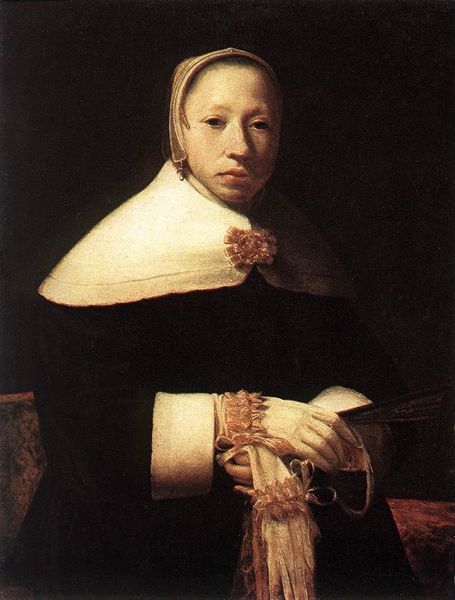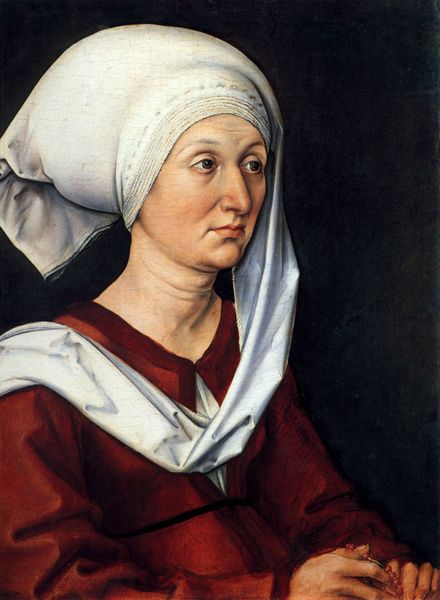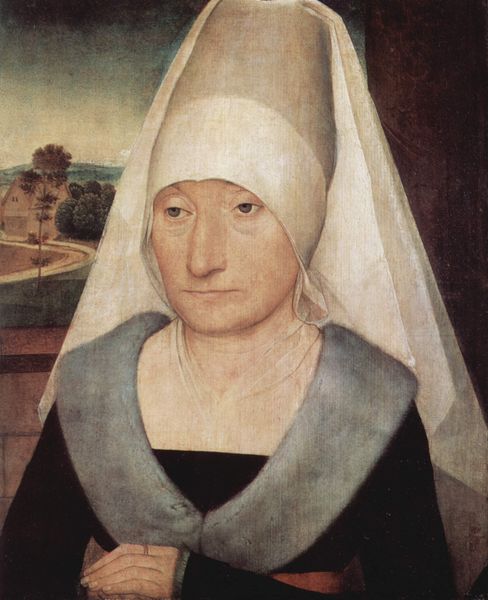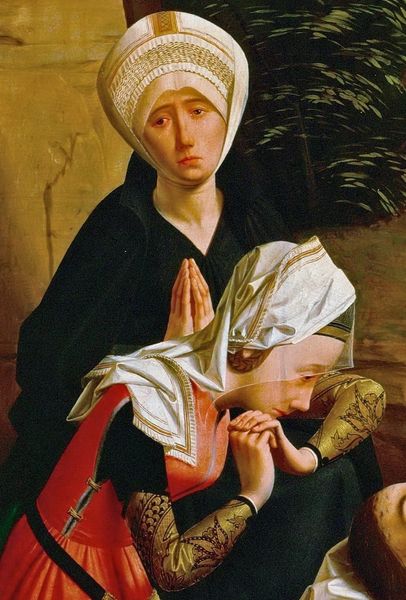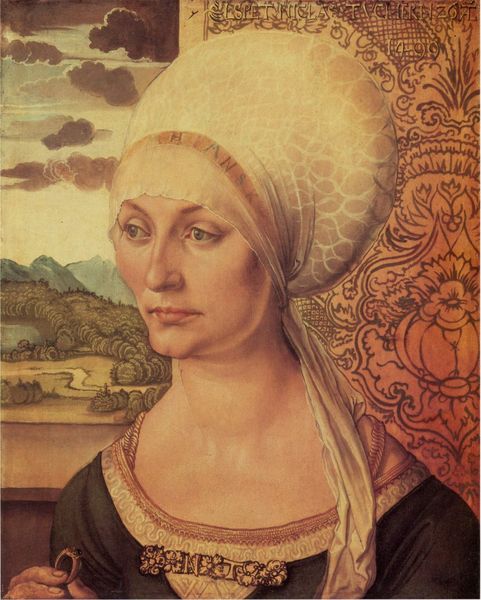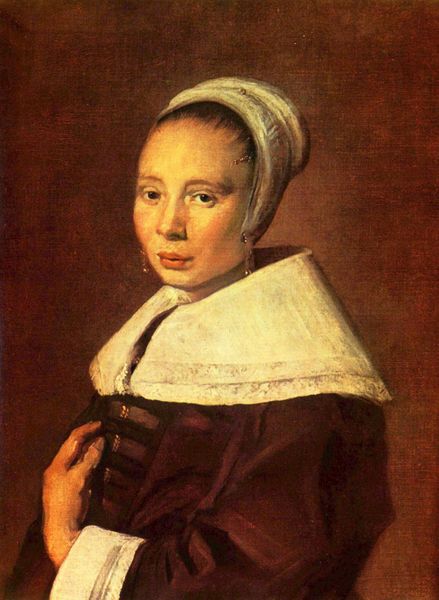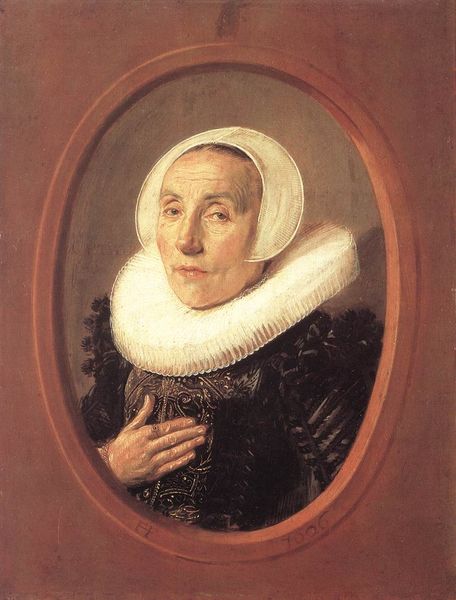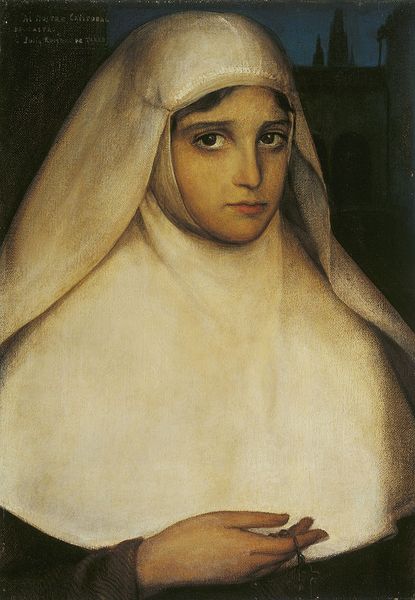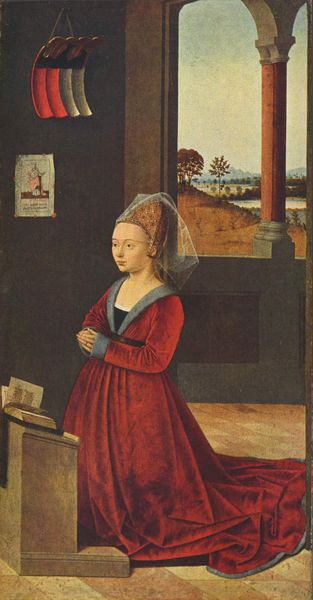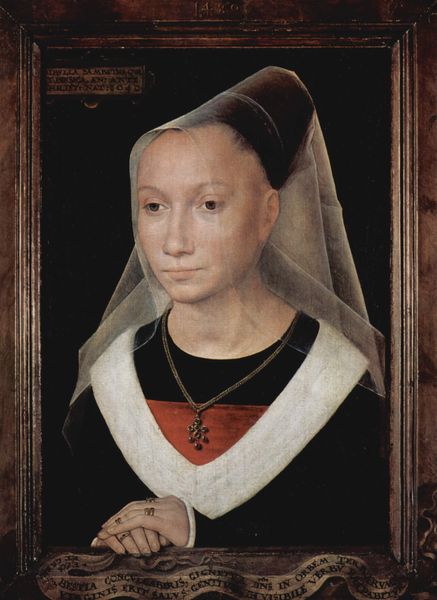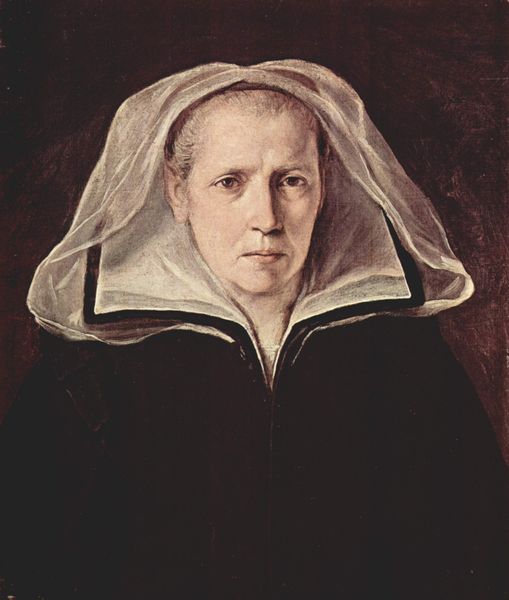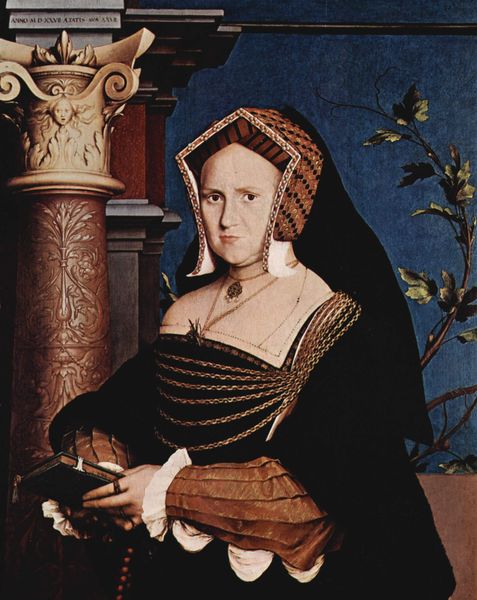
painting, oil-paint
#
portrait
#
painting
#
oil-paint
#
northern-renaissance
#
realism
Dimensions: 44.5 x 32 cm
Copyright: Public domain
Editor: Here we have Hans Memling's oil painting, "Portrait of a Praying Woman," created around 1485. The woman's face appears so serene and the details are incredibly realistic, but what really captures my attention is how this portrait blurs the line between the sacred and secular. How do you see this interplay within its historical context? Curator: That's a very insightful observation. Considering the social history of portraiture in the late 15th century, Memling’s work represents more than just a likeness. The inclusion of the woman’s posture of prayer, along with landscape, subtly elevates her status, positioning her within a space where earthly wealth meets spiritual aspiration. What implications does the presence of the dog have on your interpreation of her role? Editor: Oh, the dog! I guess I see the dog as an added detail that highlights her wealth and privilege and maybe hints at fidelity and loyalty, especially when considering the potential marital symbolism of rings, indicating she's from a powerful, probably wealthy, family? Curator: Exactly. Northern Renaissance portraiture, like Memling’s, often served specific political and social purposes. It confirmed alliances, solidified familial identities, and advertised wealth and piety. A "devotional portrait," as this could be categorized, also navigates the complex relationship between the sitter’s public image and personal beliefs, making the painting a carefully constructed statement. It makes you consider the place of women in the 15th century, how they wanted to be perceived in society, and how art reinforced certain perceptions. What has struck you most about that aspect of Memling's approach? Editor: I think it’s amazing how art of this time period provides a tangible link to the lives, aspirations, and power dynamics of people who lived so long ago, shaping a sense of collective identity and values. Curator: Precisely. Reflecting on art like this encourages us to consider how social structures influence even the most intimate representations of the individual. We, ourselves, are shaped by socio-political constructs when viewing them today.
Comments
No comments
Be the first to comment and join the conversation on the ultimate creative platform.
